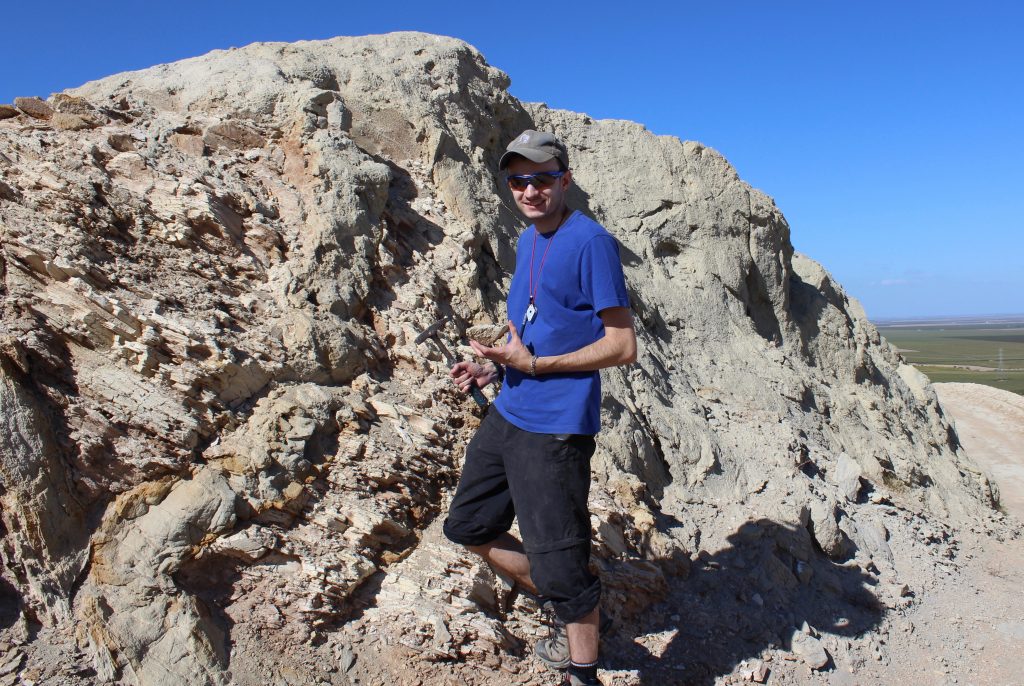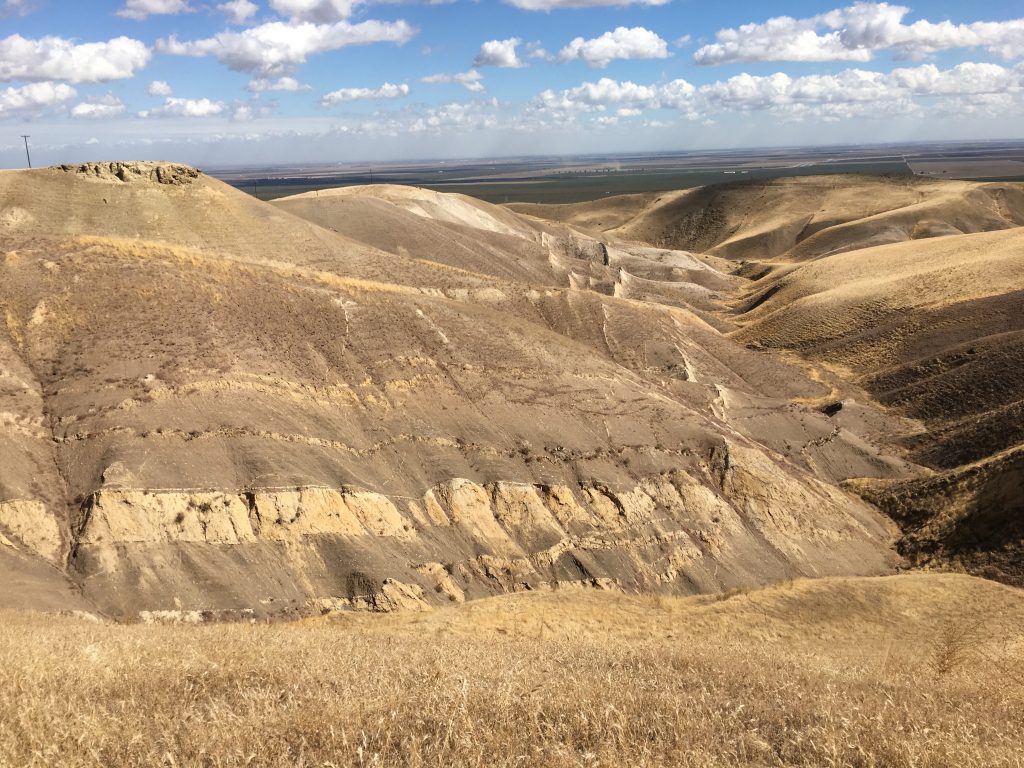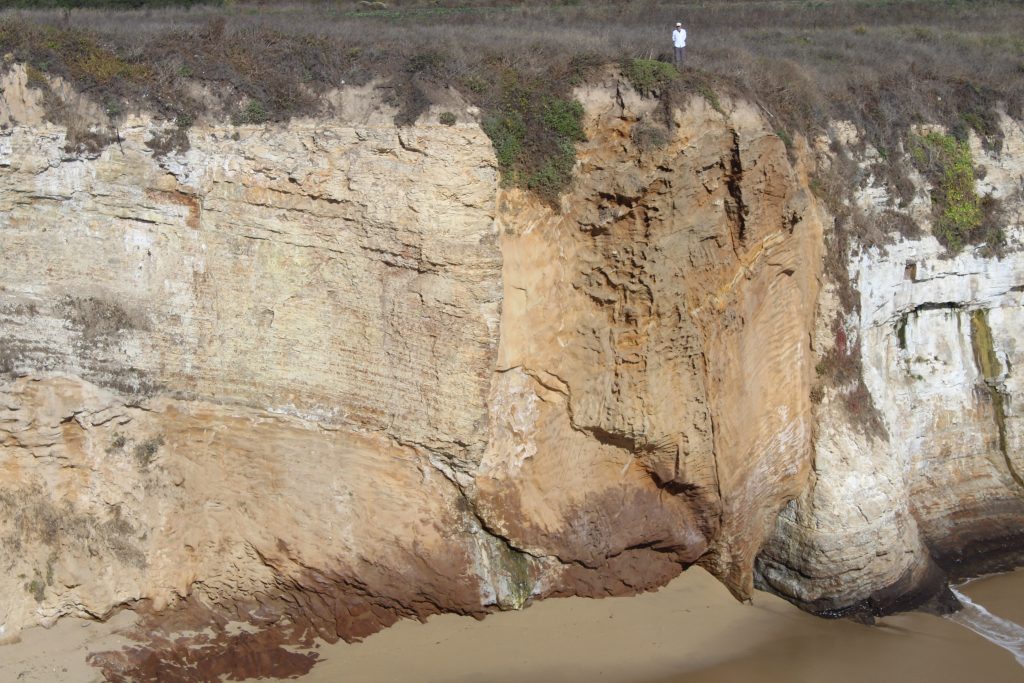During October, new PhD student Ben Callow and Prof Jon Bull visited California to study field examples of sandstone injectites as part of two collaborative carbon sequestration projects STEMM-CCS (Horizon 2020) and CHIMNEY (NERC).
California is home to some of the largest onshore examples of sandstone injectites in the world, providing Ben and Jon with a unique opportunity to see these structures in the field. Although these structures are observed today onshore in California, around 20 million years ago in the Miocene, these structures would have been found hundreds of metres below the sea floor,
Sand injectites are believed to form from a large build up in pore pressure within unconsolidated sands, the overpressurisation causes the sands to penetrate upwards into the overlying mud rock units and are observed on scales ranging from centimetre to kilometre in size.
Sand injectites are spectacular examples of fluid flow within the subsurface. A comprehensive understanding of fluid flow within the subsurface is critical for developing effective monitoring and mitigation strategies for CO2 leakage at carbon capture and storage sites, hence the importance of the study.

For the first half of the week Ben and Jon were very grateful to be shown examples of sand injectites in the Panoche Hills by Professor Andrew Hurst of the University of Aberdeen sandstone injection group. The evenings were spent at the local town of Los Banos where we spent time with Andrew and his research team.

The second half of the week saw Ben and Jon travel to the beautiful coastline of Santa Cruz, where more examples of sandstone injectites were observed. Fieldwork was undertaken at Yellowbank, Four Mile and Panther beaches, which Ben and Jon had to share with local surfers and sunbathers alike.

“The California trip was a fantastic introduction to my PhD and has opened my eyes to the breadth and depth of my chosen subject area. The experience has provided an excellent starting point for further research” – Ben Callow, PhD student, University of Southampton.
“The field excursion will form an important starting point for Ben into further research of this subject area, which will form important contributions to both STEMM-CCS and CHIMNEY. We thank Professor Andrew Hurst and his field team from the University of Aberdeen, in particular Antonio Grippe, Gustavo Zvirtes and Giuseppe Palladino for their generosity and excellent company on the trip” – Jon Bull, Professor in Geology and Geophysics, University of Southampton.